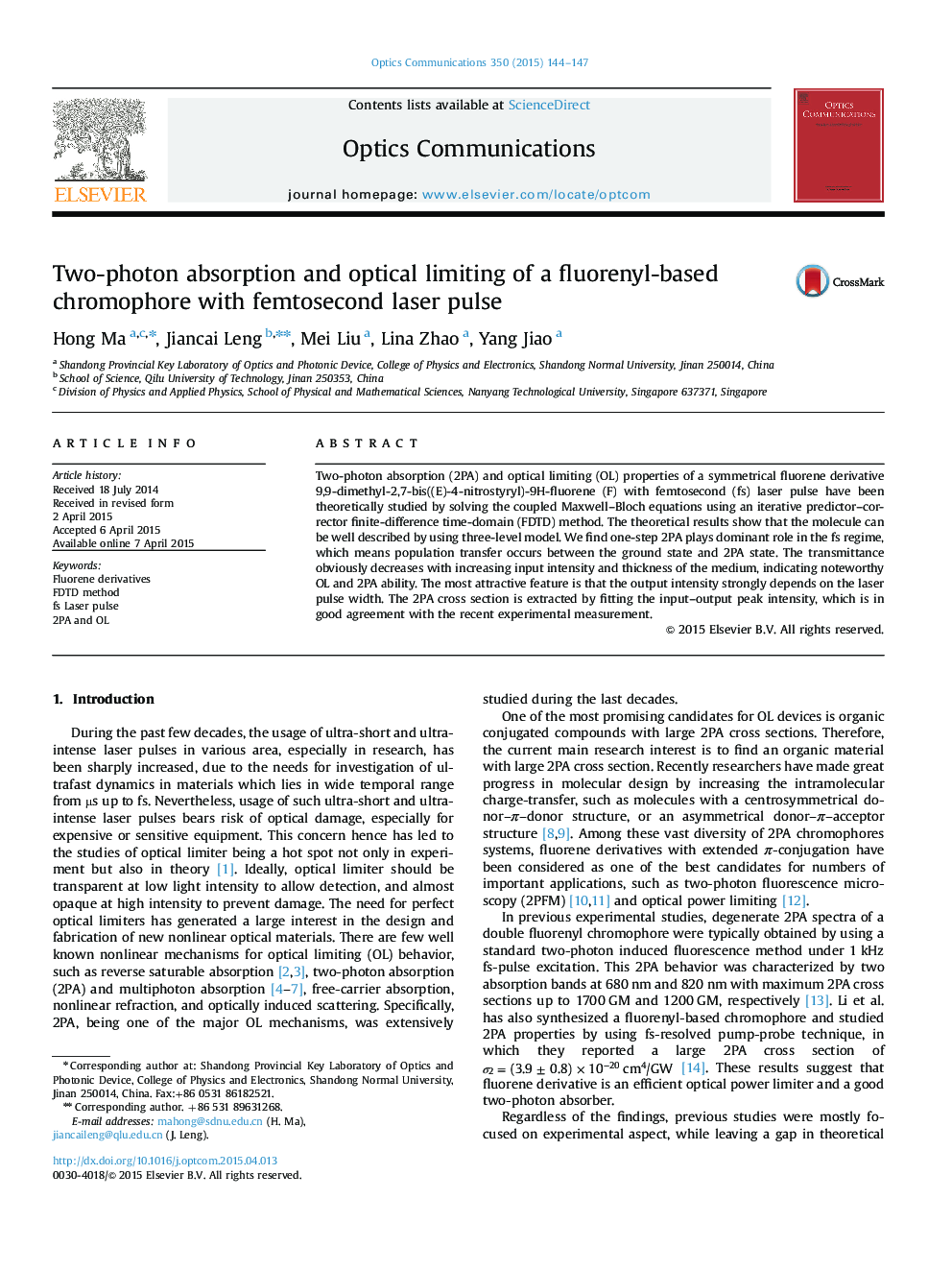| Article ID | Journal | Published Year | Pages | File Type |
|---|---|---|---|---|
| 1533963 | Optics Communications | 2015 | 4 Pages |
•A symmetrical fluorenyl-based derivative.•An iterative predictor–corrector finite-difference time-domain method.•Noteworthy two-photon absorption and optical limiting behavior.•Large TPA cross section.•Potential candidates for optical limiting devices in femtosecond domain.
Two-photon absorption (2PA) and optical limiting (OL) properties of a symmetrical fluorene derivative 9,9-dimethyl-2,7-bis((E)-4-nitrostyryl)-9H-fluorene (F) with femtosecond (fs) laser pulse have been theoretically studied by solving the coupled Maxwell–Bloch equations using an iterative predictor–corrector finite-difference time-domain (FDTD) method. The theoretical results show that the molecule can be well described by using three-level model. We find one-step 2PA plays dominant role in the fs regime, which means population transfer occurs between the ground state and 2PA state. The transmittance obviously decreases with increasing input intensity and thickness of the medium, indicating noteworthy OL and 2PA ability. The most attractive feature is that the output intensity strongly depends on the laser pulse width. The 2PA cross section is extracted by fitting the input–output peak intensity, which is in good agreement with the recent experimental measurement.
